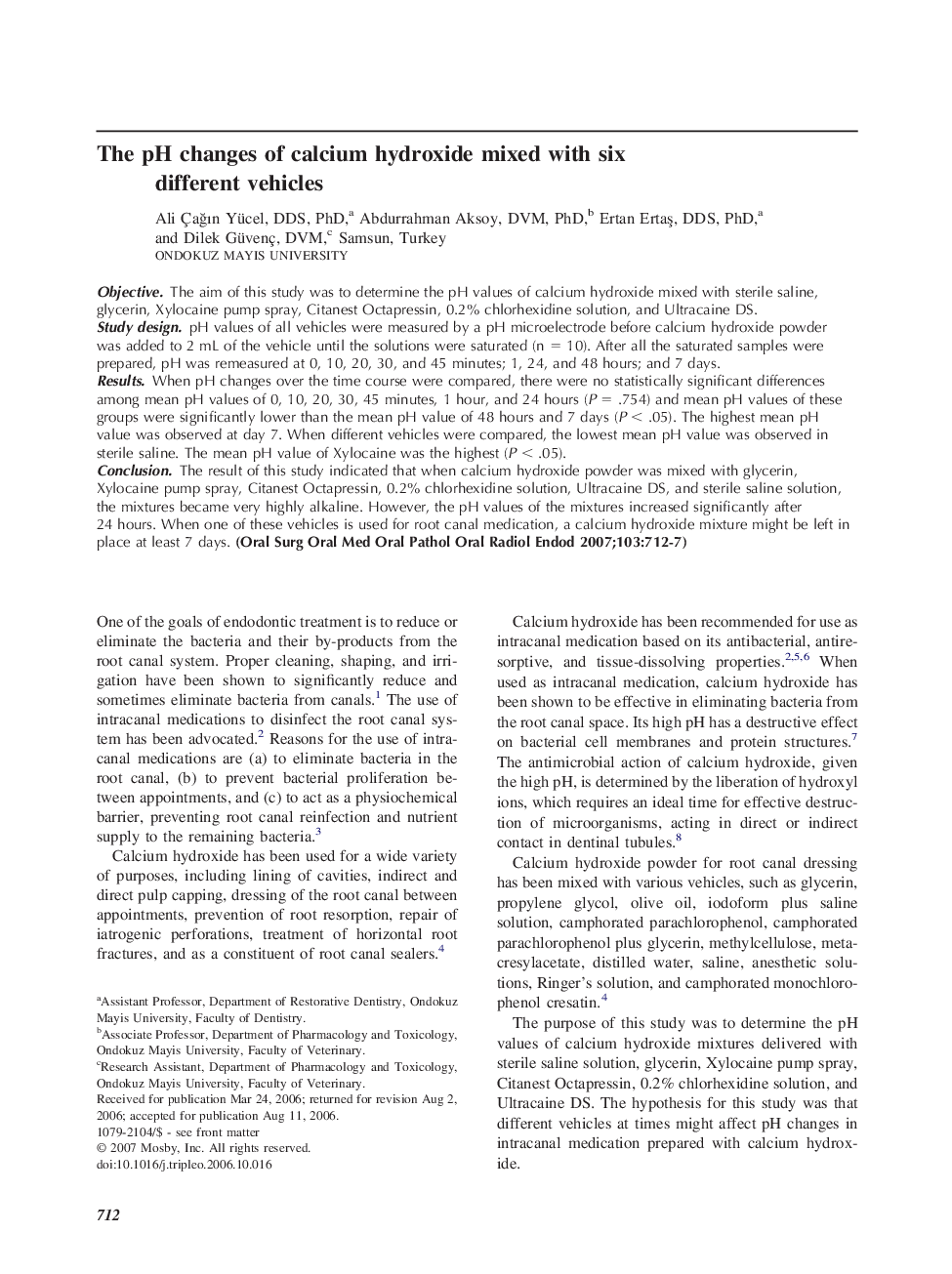| Article ID | Journal | Published Year | Pages | File Type |
|---|---|---|---|---|
| 3169435 | Oral Surgery, Oral Medicine, Oral Pathology, Oral Radiology, and Endodontology | 2007 | 6 Pages |
ObjectiveThe aim of this study was to determine the pH values of calcium hydroxide mixed with sterile saline, glycerin, Xylocaine pump spray, Citanest Octapressin, 0.2% chlorhexidine solution, and Ultracaine DS.Study designpH values of all vehicles were measured by a pH microelectrode before calcium hydroxide powder was added to 2 mL of the vehicle until the solutions were saturated (n = 10). After all the saturated samples were prepared, pH was remeasured at 0, 10, 20, 30, and 45 minutes; 1, 24, and 48 hours; and 7 days.ResultsWhen pH changes over the time course were compared, there were no statistically significant differences among mean pH values of 0, 10, 20, 30, 45 minutes, 1 hour, and 24 hours (P = .754) and mean pH values of these groups were significantly lower than the mean pH value of 48 hours and 7 days (P < .05). The highest mean pH value was observed at day 7. When different vehicles were compared, the lowest mean pH value was observed in sterile saline. The mean pH value of Xylocaine was the highest (P < .05).ConclusionThe result of this study indicated that when calcium hydroxide powder was mixed with glycerin, Xylocaine pump spray, Citanest Octapressin, 0.2% chlorhexidine solution, Ultracaine DS, and sterile saline solution, the mixtures became very highly alkaline. However, the pH values of the mixtures increased significantly after 24 hours. When one of these vehicles is used for root canal medication, a calcium hydroxide mixture might be left in place at least 7 days.
